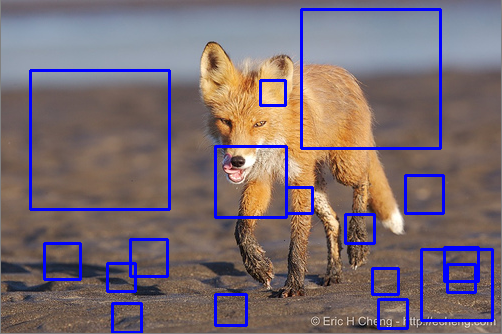Improving Haar Cascade results
Hey everyone,
Second attempt at making a Haar Cascade; initial one I just followed a frontal face tutorial and it worked out pretty good. This time I've tried using Cascade Trainer GUI by amin-ahmadi, with CV2 version 4.1.2 installed, to try train a cascade for foxes.
Using ImageNet, I gathered 1,851 positives (of foxes, vulpus vulpus) and 2,796 negatives (trees, cliffs, plants). Used 15 stages, sample width and height of 24, and feature type HAAR. Training roughly took ~6 hours.
Results were interesting:

The only cascading part of my classifier was the cascading boxes detecting the floor.
What could I have done better, any stand out mistakes? I read that maybe I should have cropped the photos and sized positive photos to similar dimensions?
Happy to use python and a server in the future rather than a GUI. Would love to just get some rudimentary fox detection working.
Thanks in advance!
Edit: Putting some more images through it - it seems to detect foxes not too badly; the issue is it does think general background objects are foxes too, like in the photo above.

Switch to deep learning. Better accuracy, better robustness.